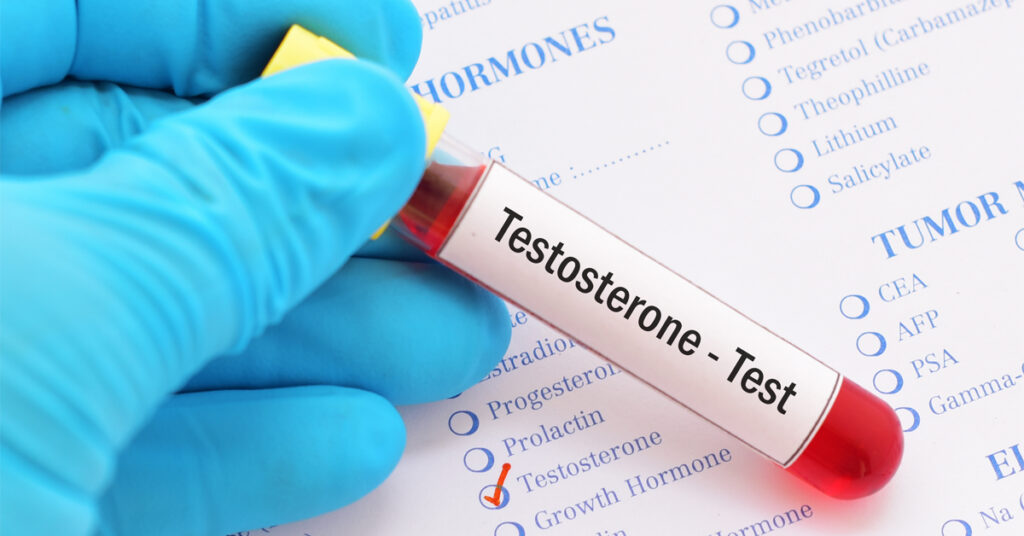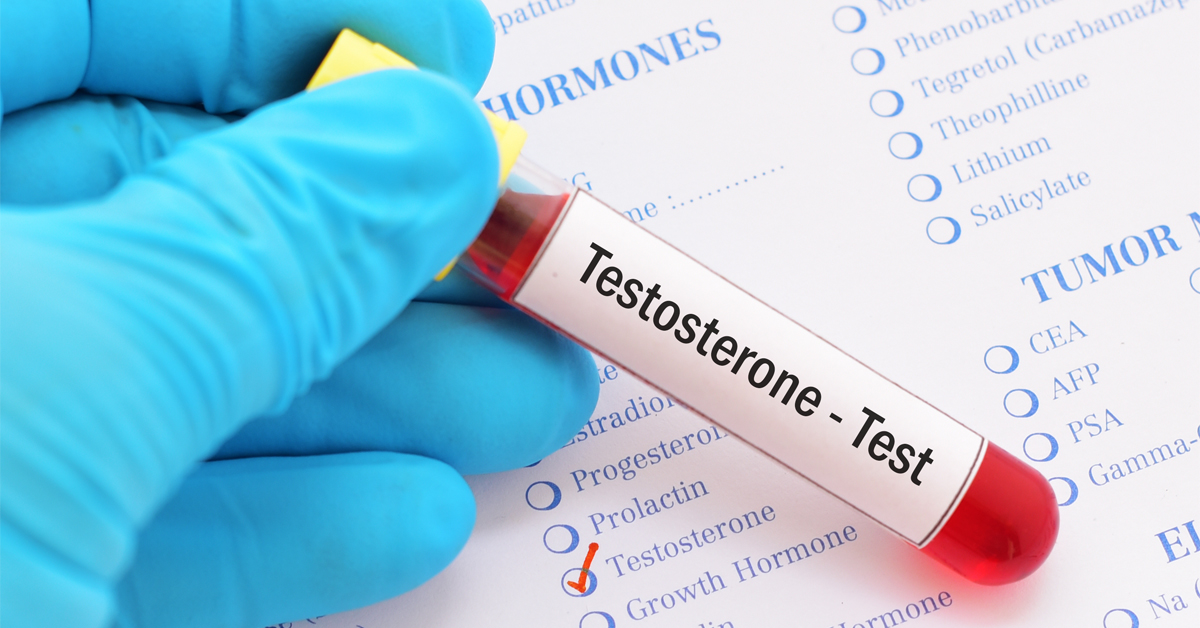
Testosterone (T) is an important sex hormone found in both males and females. It’s also known as an androgen. Testosterone is necessary for regulating sexual and reproductive development and must be balanced to ensure the body functions correctly.
How Is Testosterone Produced?
Testosterone is mainly produced by the testicles in males and the ovaries in females.
Additionally, the adrenal glands produce a hormone called DHEA which the body can convert into both testosterone and estrogen.
Testosterone is the primary androgen that plays a role in promoting the development of masculine characteristics.
The two forms of testosterone in your body are:
- Free testosterone. This testosterone circulates in your bloodstream without being attached to any proteins. It is readily available for your body to use.
- Bound testosterone. This type of testosterone is loosely connected to proteins which play an essential role in regulating transport, distribution, and activity.
What Is a Testosterone Test?
A T test is a tool used to measure hormone levels in your body. The proper balance of hormones is vital for healthy body functioning. If your doctor suspects you have irregular testosterone levels, they may recommend a blood test. Typically, men will notice symptoms of low testosterone as they age and testosterone levels start to drop.
Symptoms of a low testosterone level may include:
- Hair loss
- Male Infertility
- Low muscle mass
- Low sex drive
- Erectile dysfunction
Three types of blood tests measure these different forms of testosterone:
- A total testosterone test. This is the most common type of test. It measures both free testosterone and testosterone that is attached to proteins.
- A free testosterone test. This test measures only the active form of testosterone. It is less common but may help diagnose certain medical conditions.
- A bioavailable testosterone test. This test measures free testosterone and testosterone that’s loosely attached to a blood protein. This test isn’t commonly done. But, like a free testosterone test, it may help diagnose certain medical conditions.
What Is the Significance of Testosterone Test Results?
Test results provide insight into whether the testosterone levels in your body are low, high, or within the normal range. Interpretation of these results can differ based on age and gender.
Remember that the standard ranges for testosterone levels may differ depending on the blood test method and the laboratory conducting it. Your doctor will use the specific normal ranges from your laboratory when evaluating your results. For this reason, it is best to ask your doctor to explain your results.
While a testosterone level test itself cannot diagnose health issues, abnormal results combined with specific symptoms could indicate a potential health concern.
In males, low T levels may be caused by different medical conditions, including:
- A problem with the pituitary gland
- Testicular injury
- A benign, noncancerous tumor
- A genetic disease or disorder
- Chronic medical conditions, like liver cirrhosis
If your results are abnormal, it doesn’t always mean you have a medical condition that needs treatment. The most common cause of low testosterone is age. Obesity, poorly managed Type 2 diabetes, or obstructive sleep apnea can also lead to low testosterone.
Treating Low Testosterone
Low testosterone can often be treated with lifestyle changes in mild cases and testosterone replacement therapy (TRT) in more severe cases. TRT can be done with several different routes, including injections, patches, pellet implants, or gels.
If the cause of the low T is due to medical conditions, treating those conditions may resolve it.
A T test is a simple, low-risk procedure offering valuable insights. Don’t continue to live with the symptoms of low T – schedule an appointment today!

